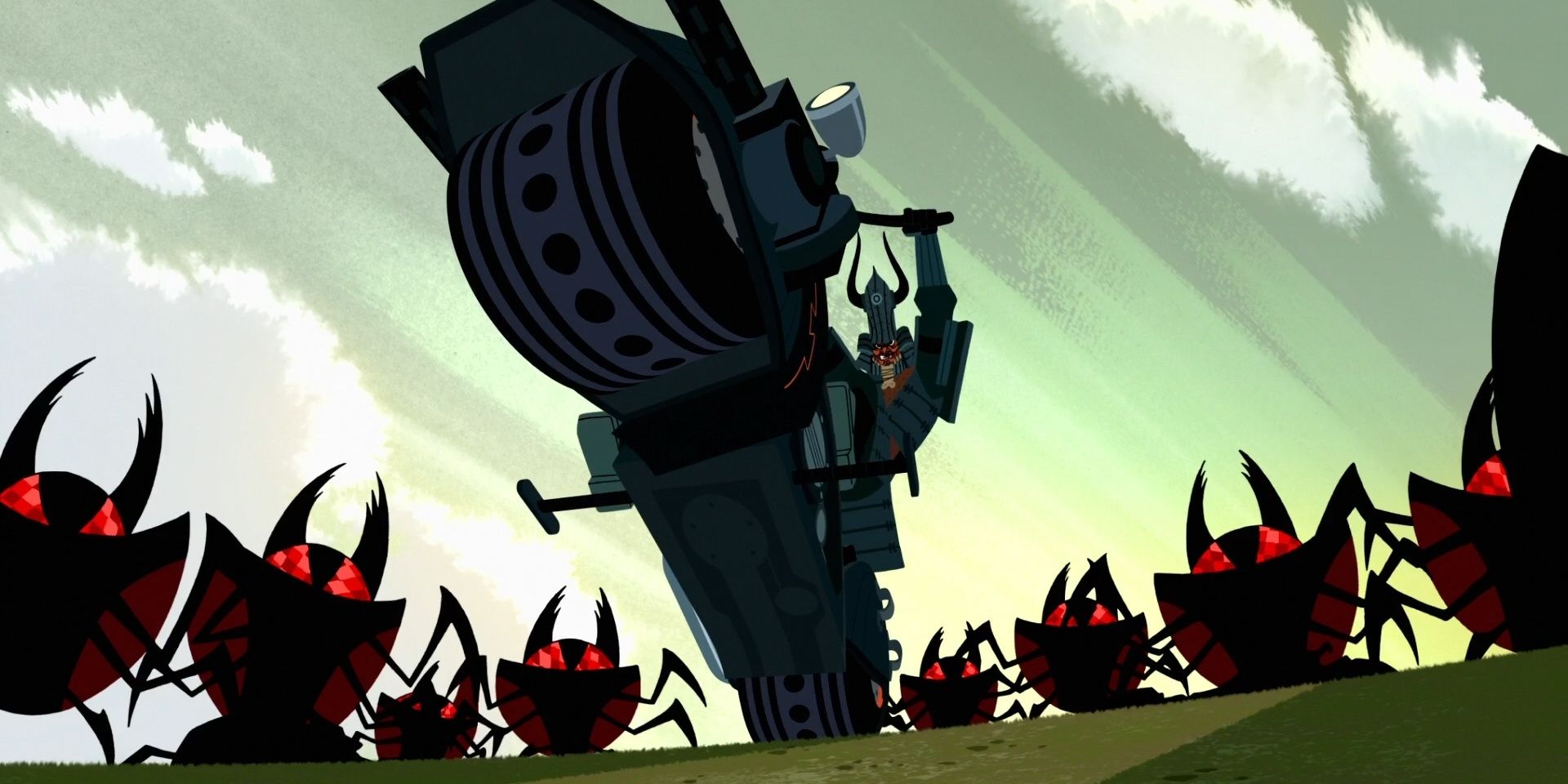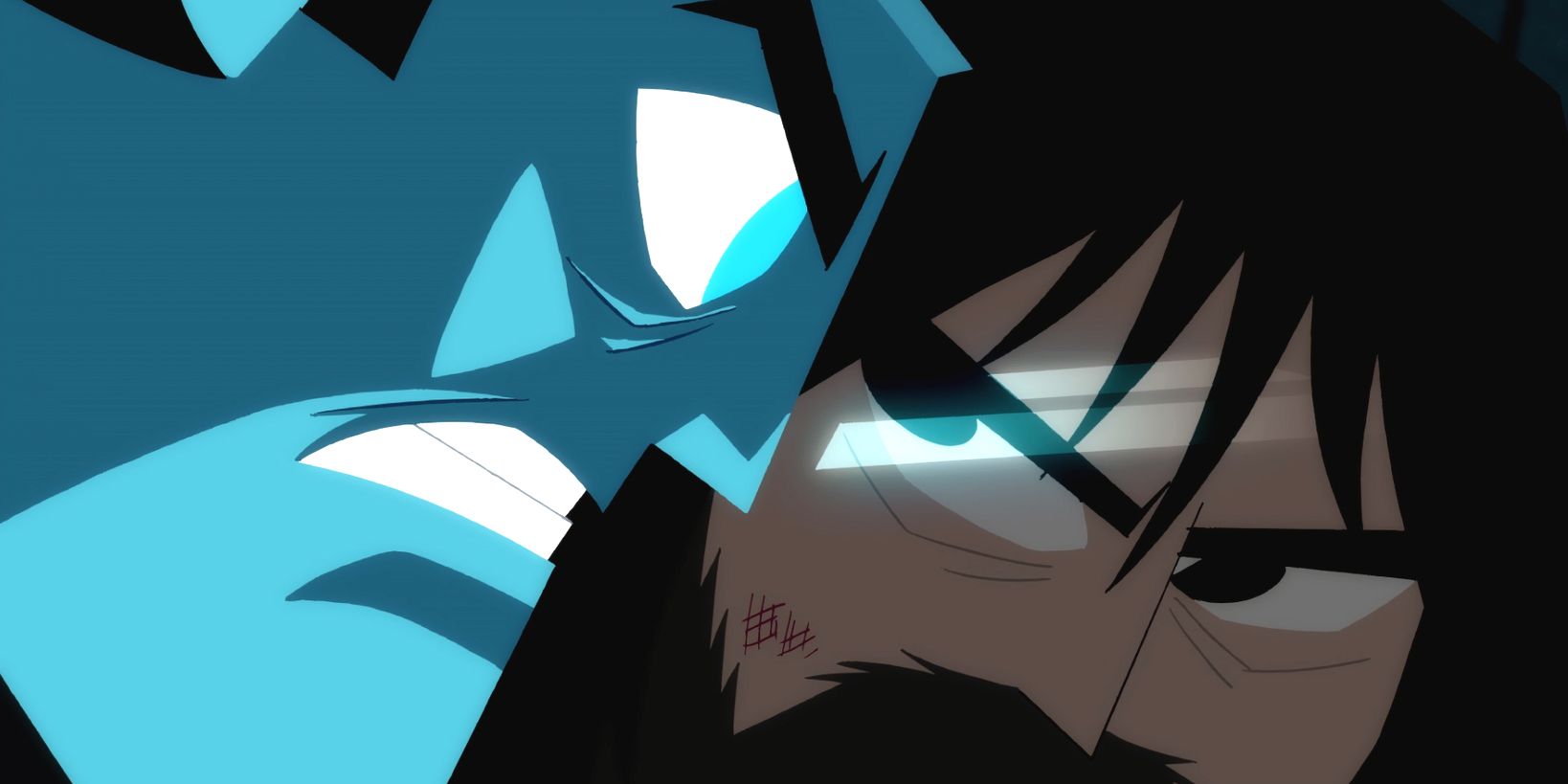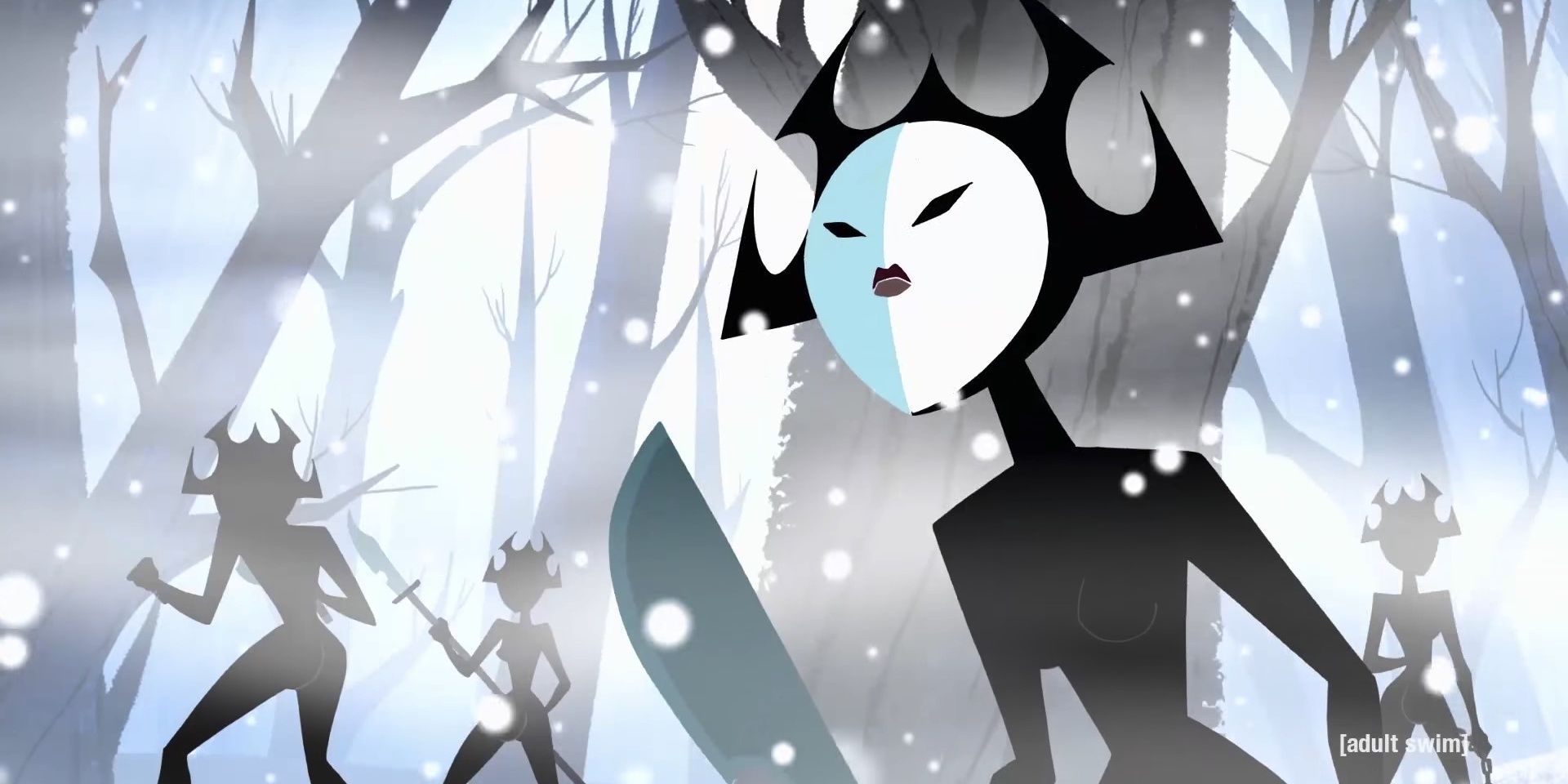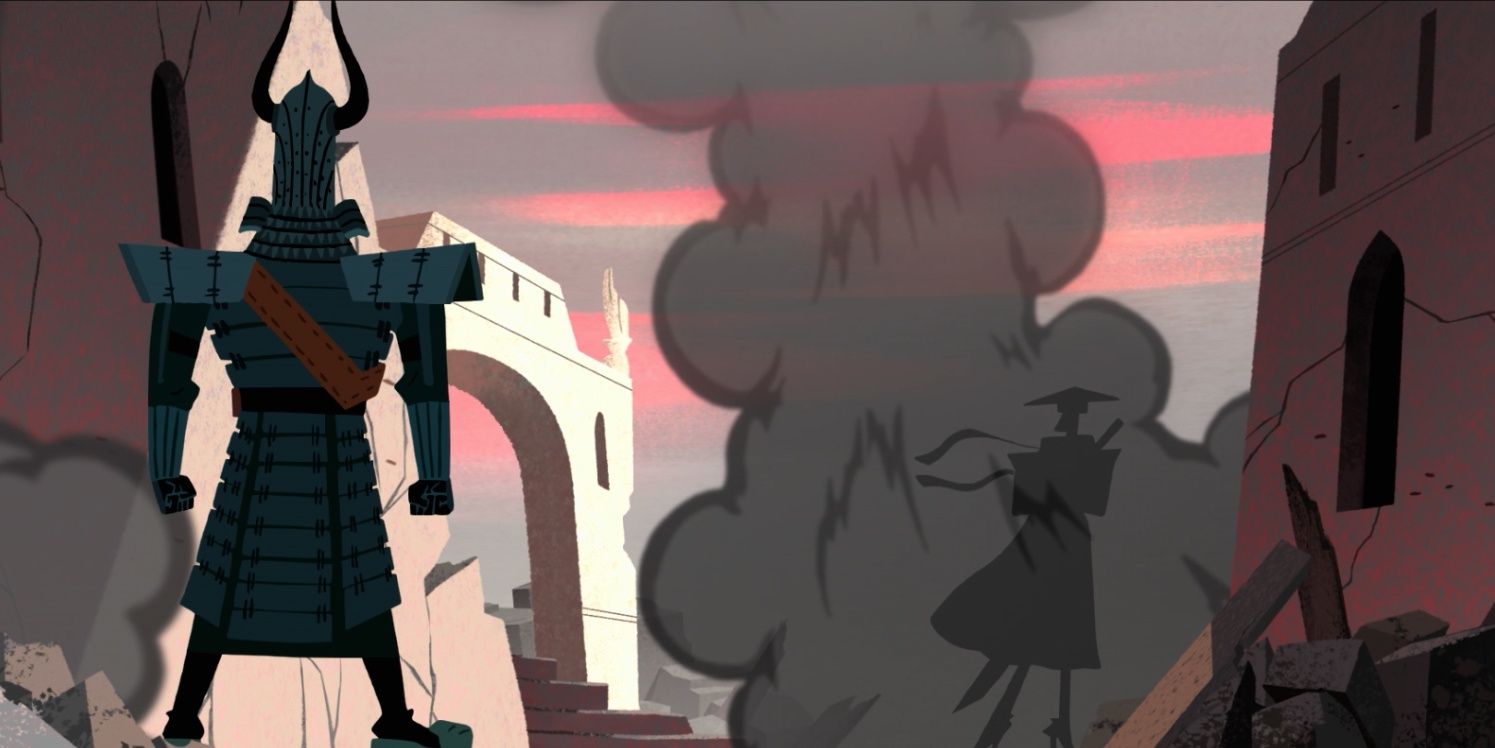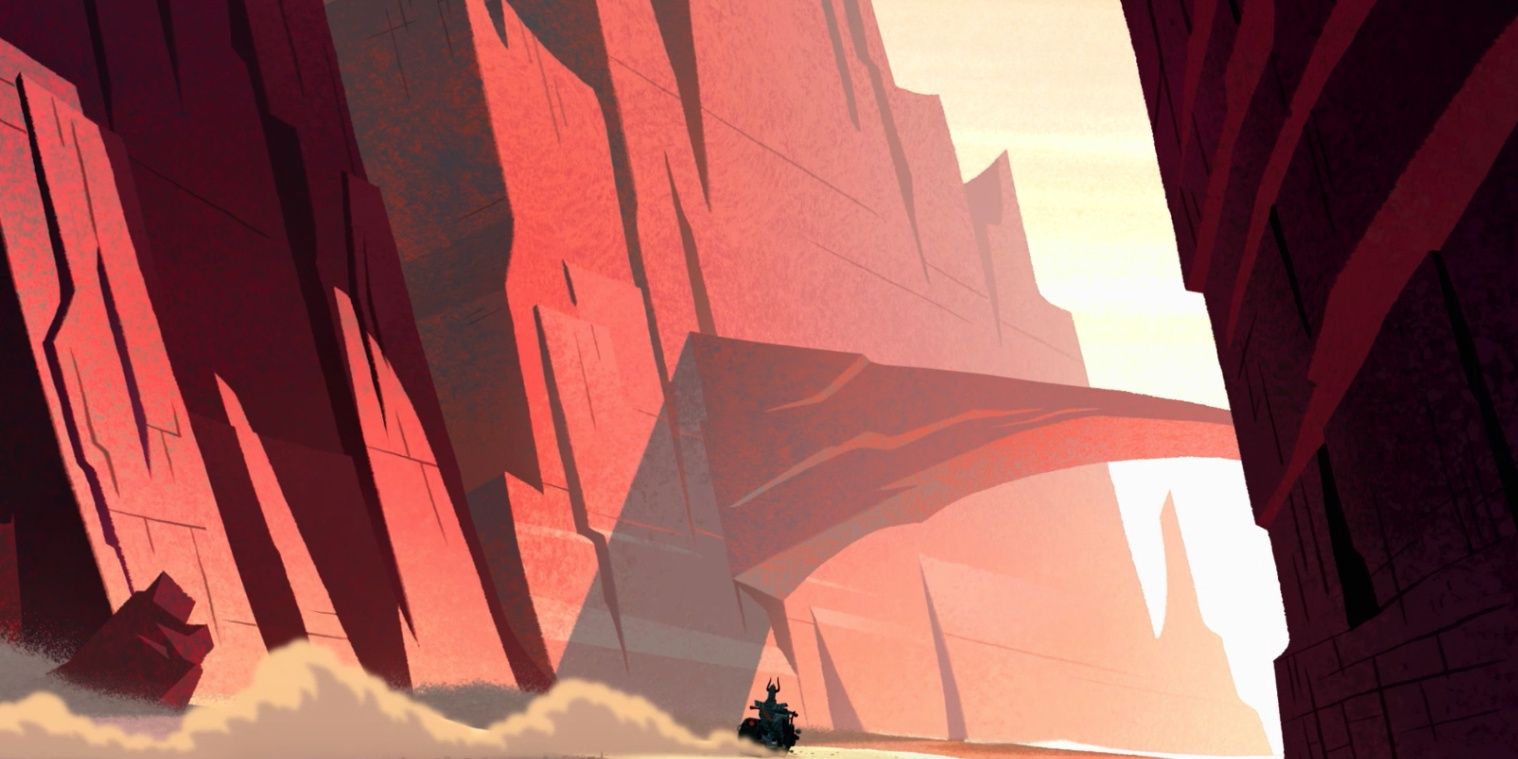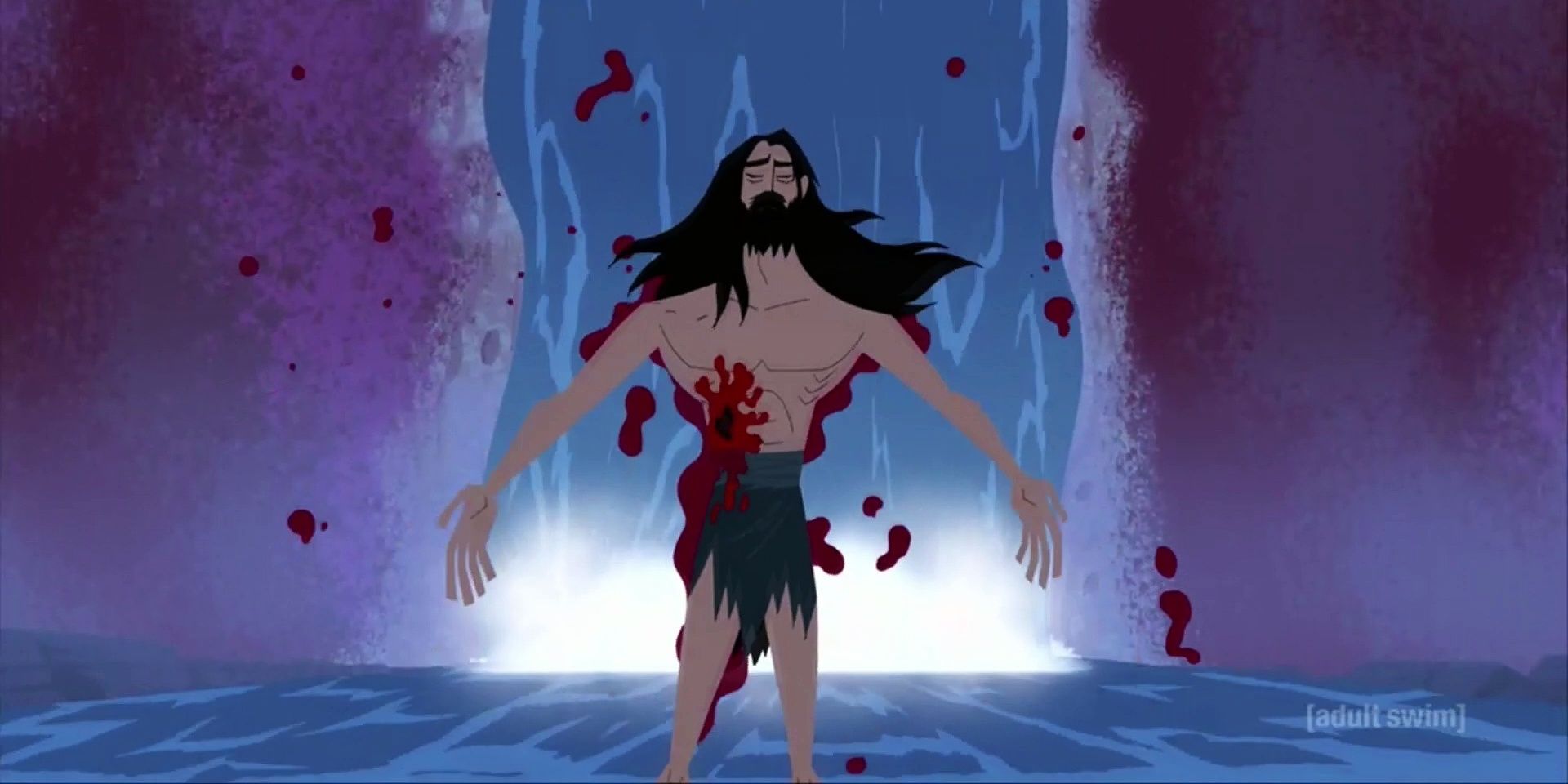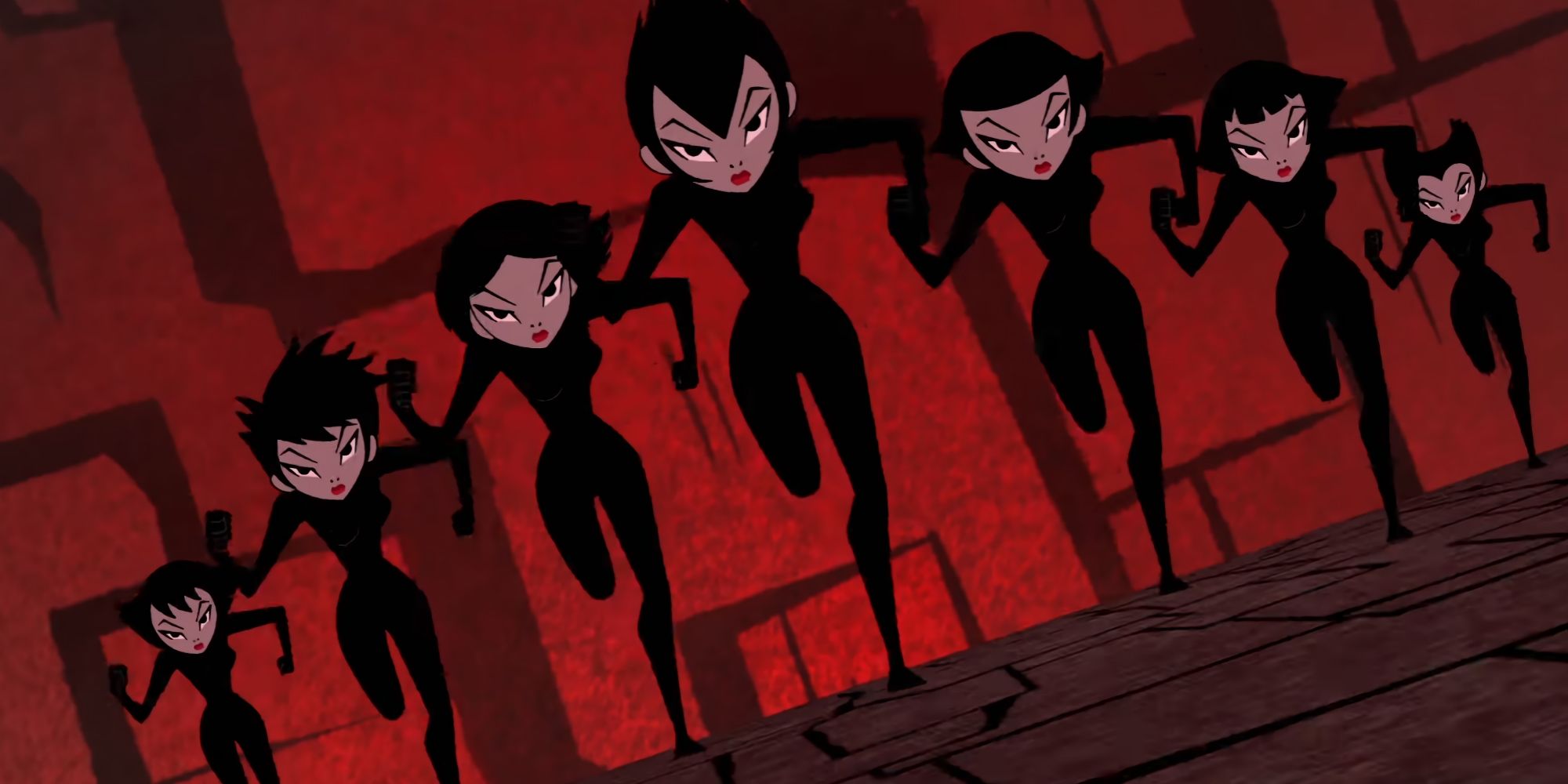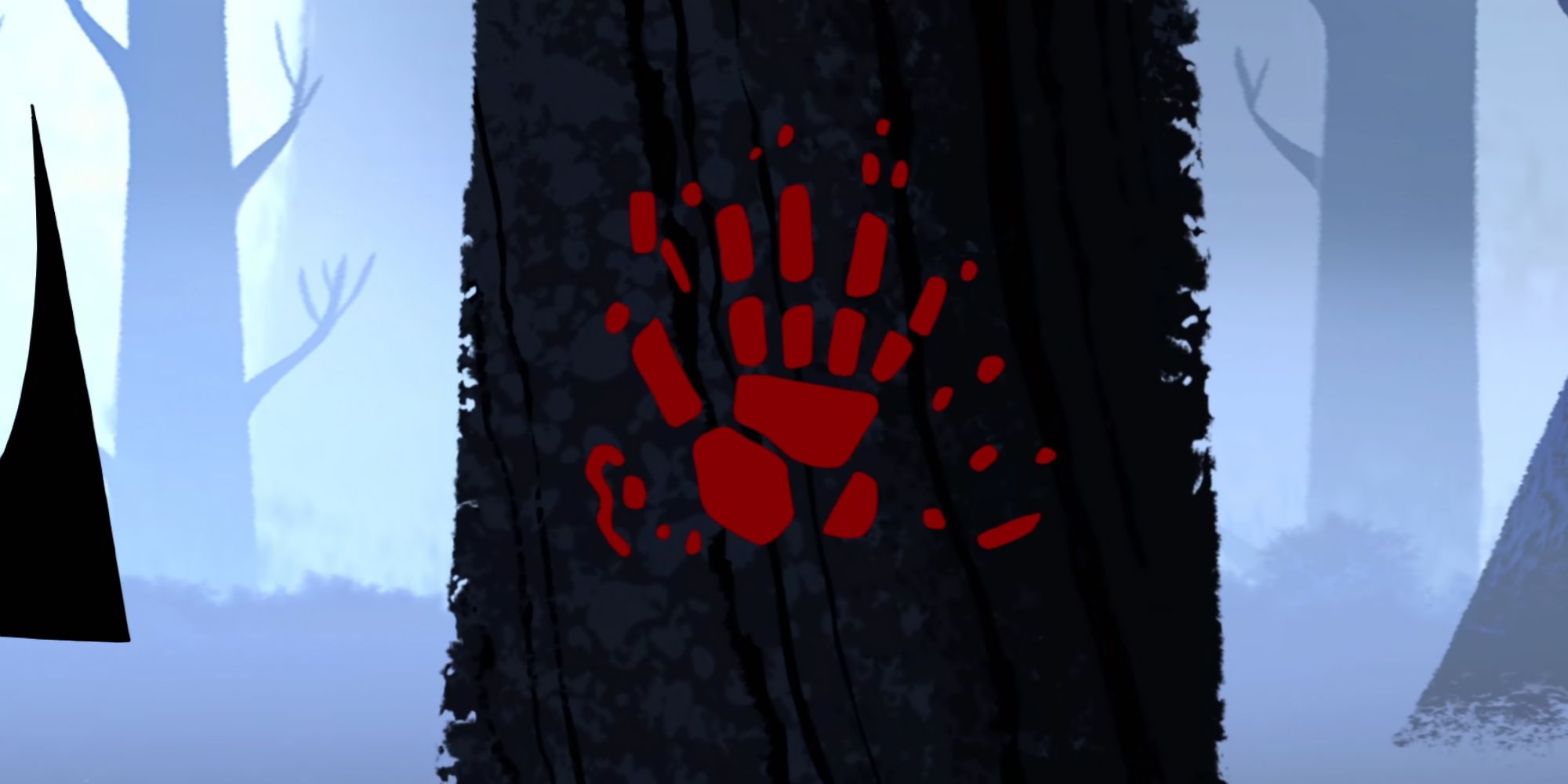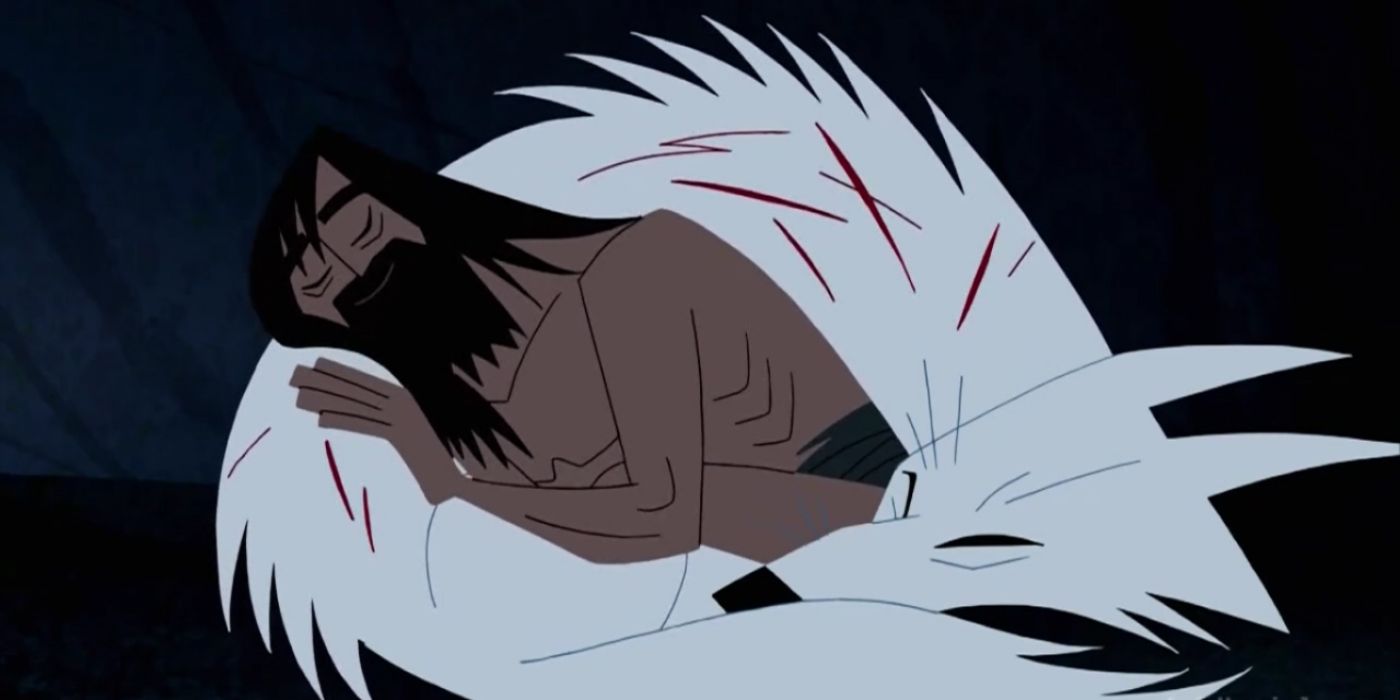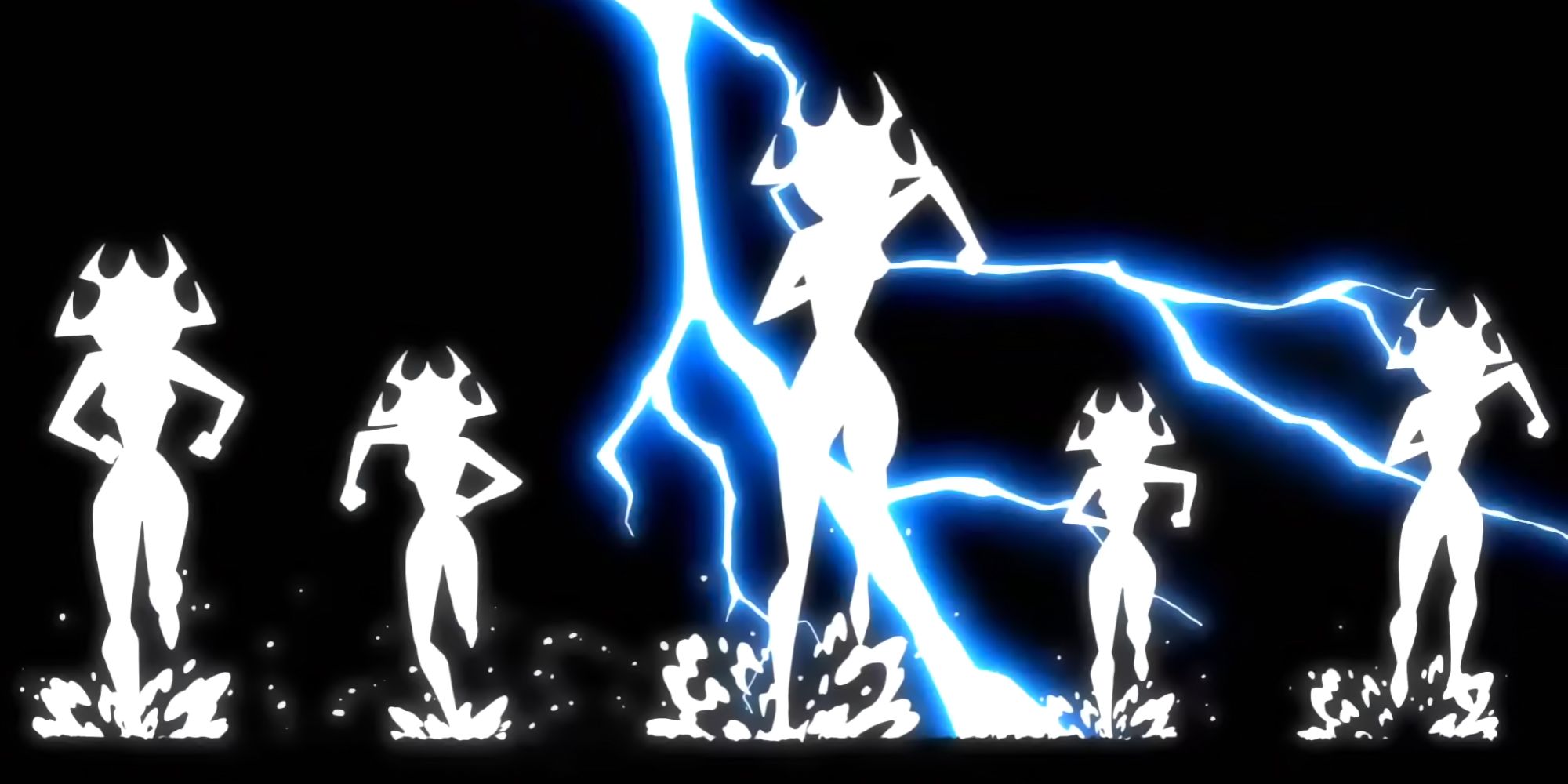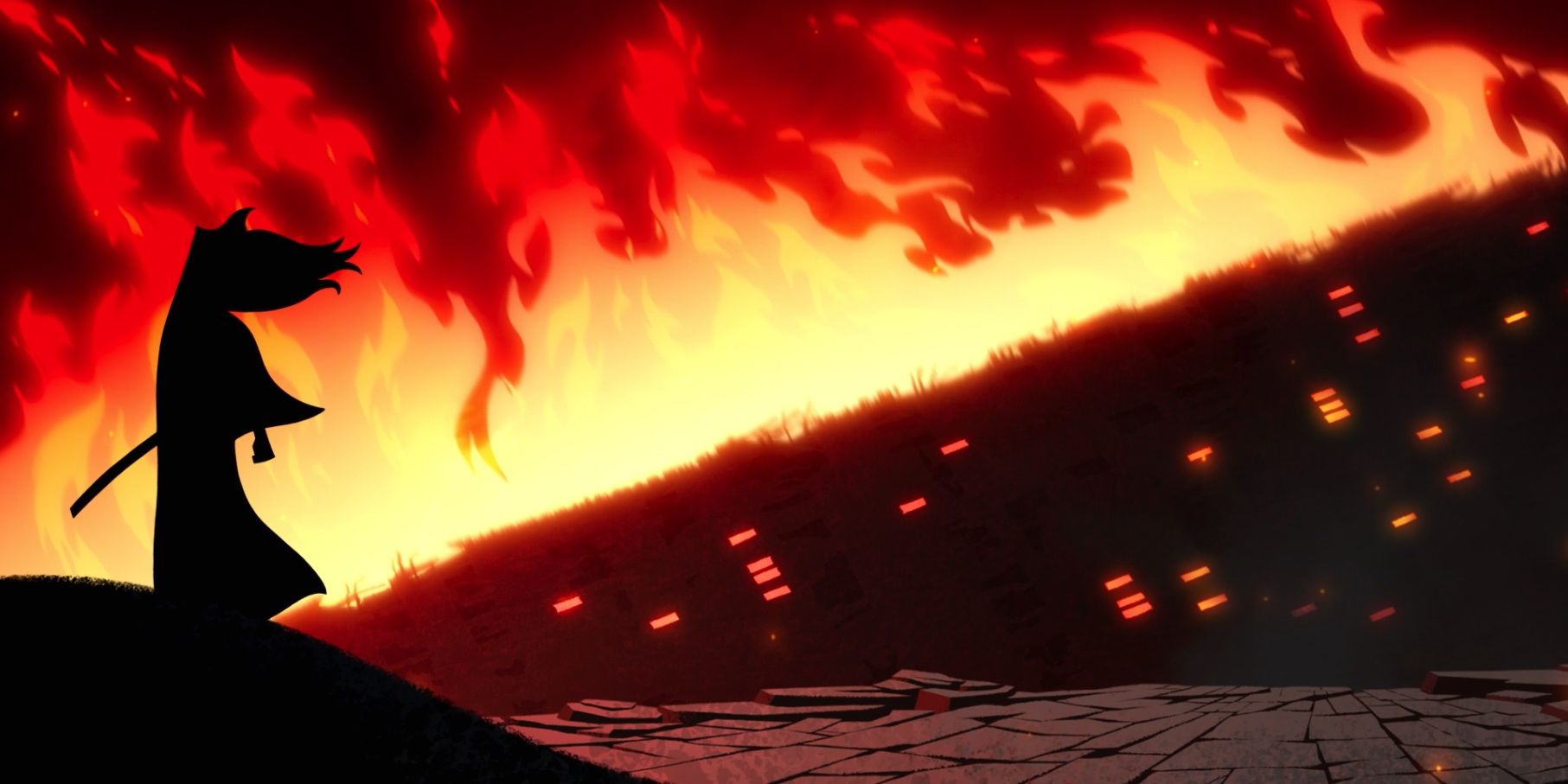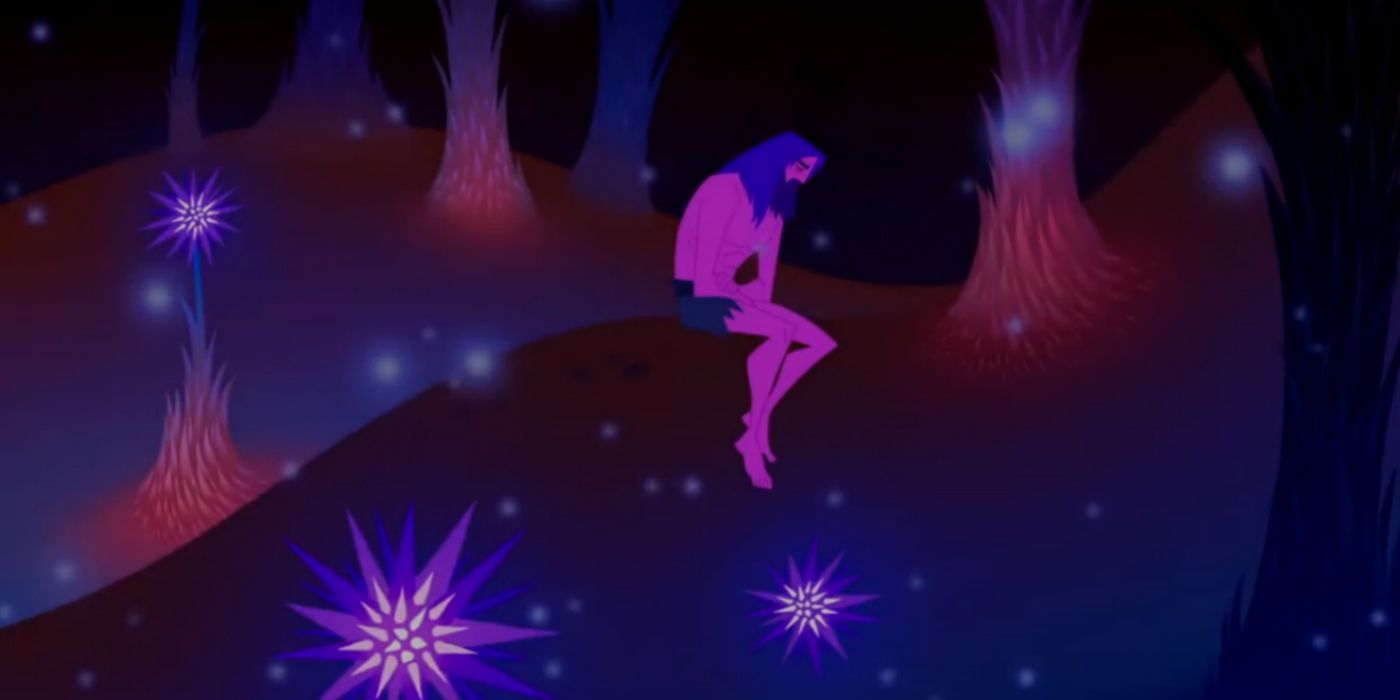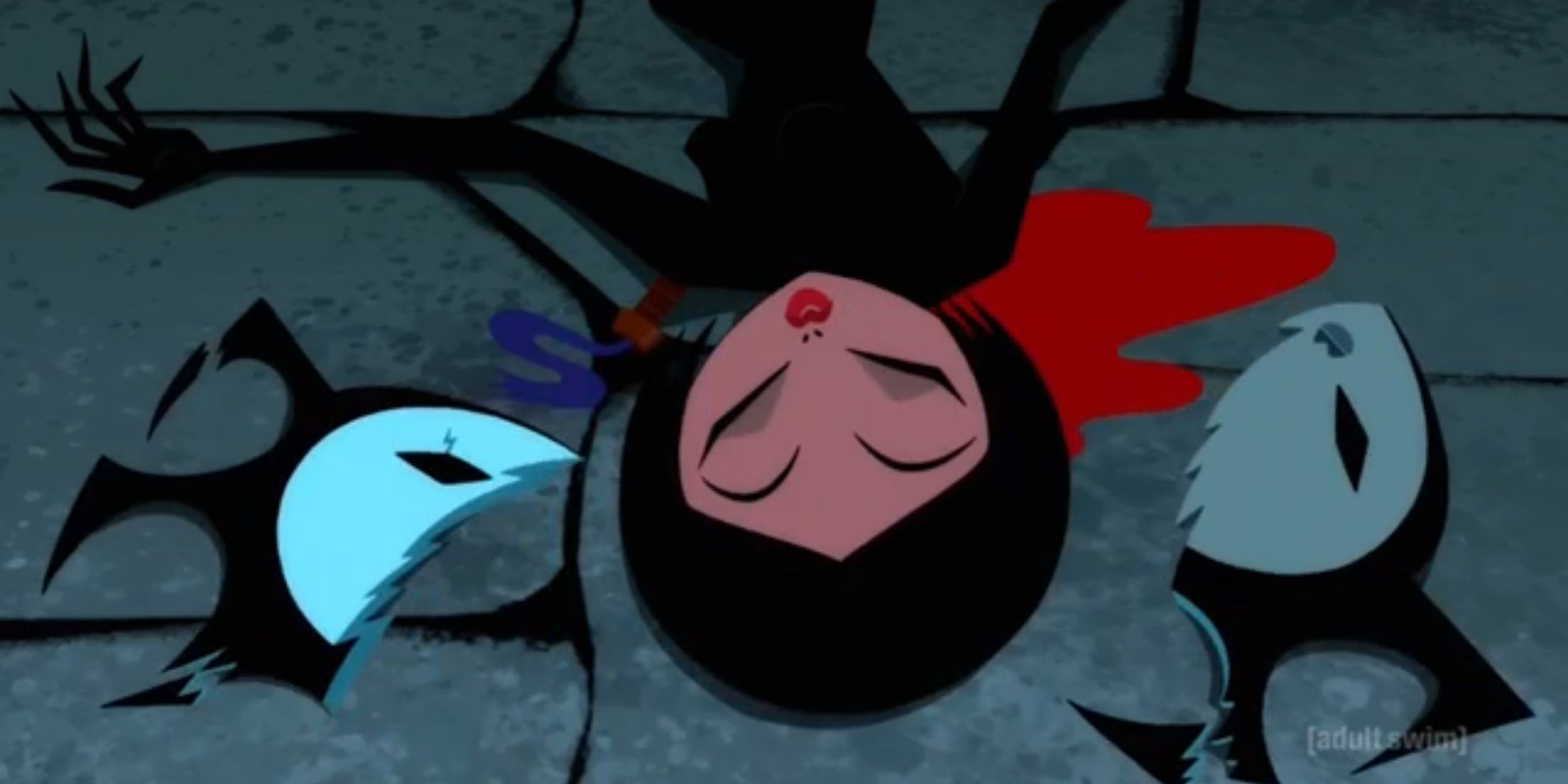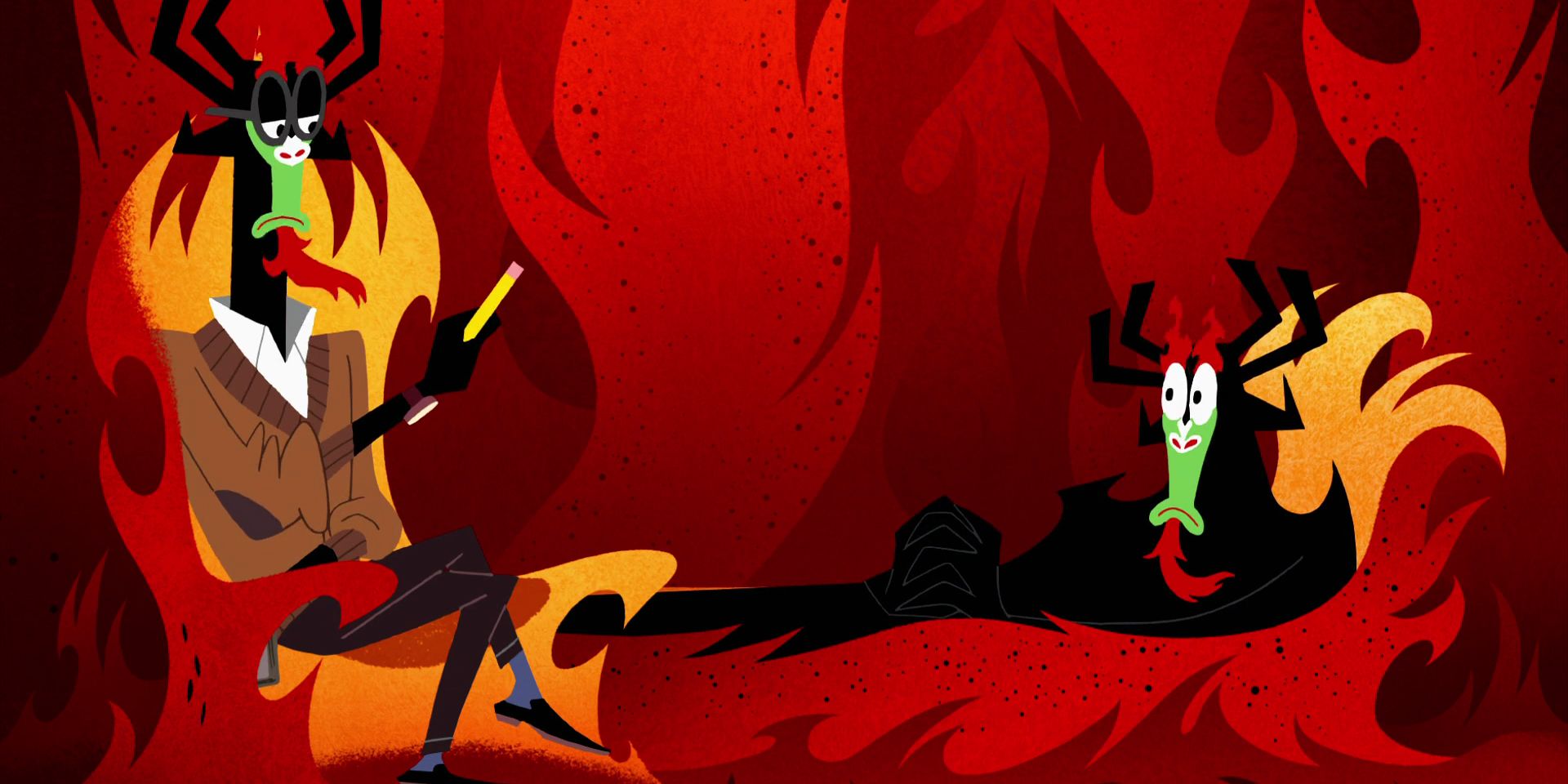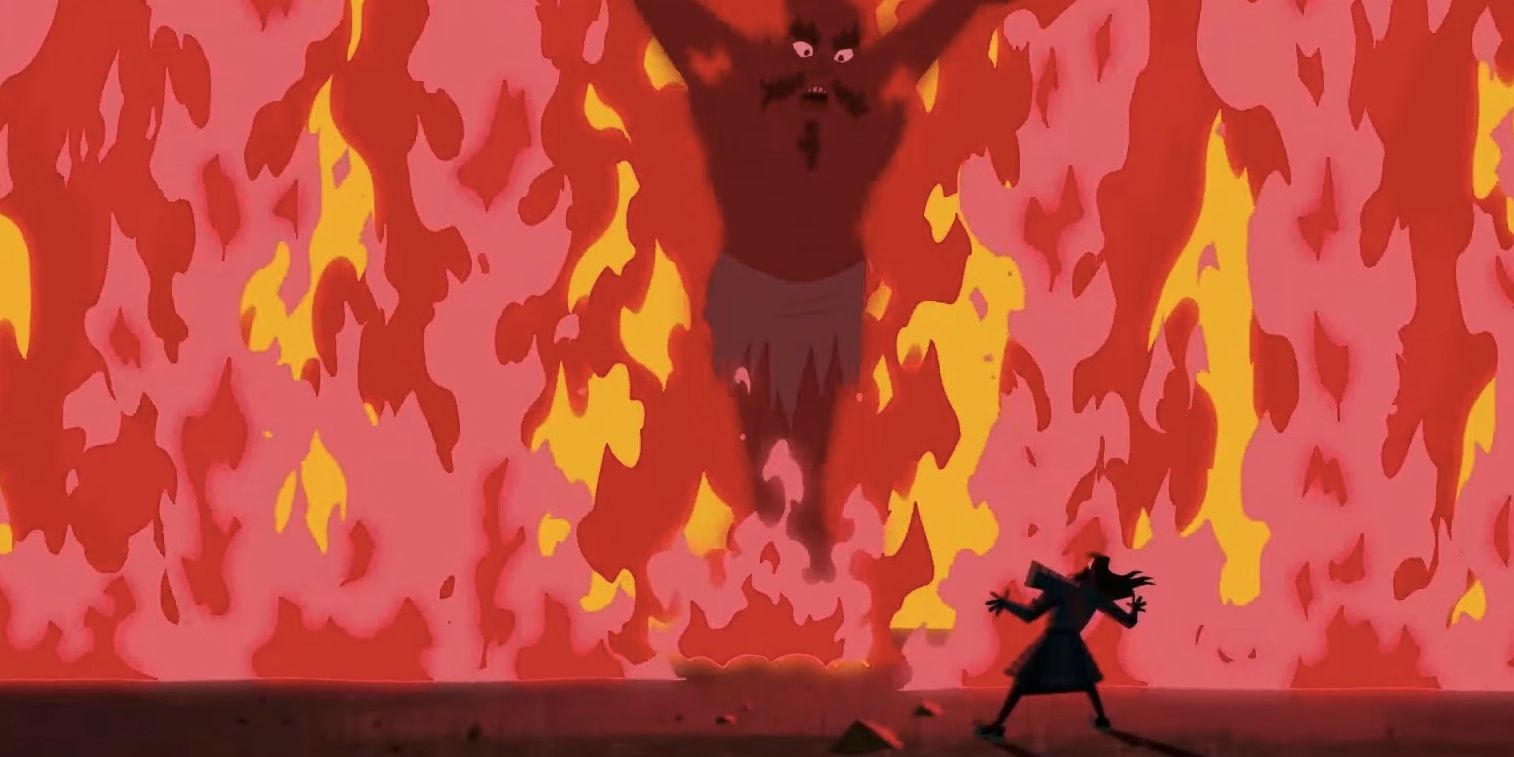Long ago in 2001, Cartoon Network viewers watched as an ancient samurai warrior was flung to the distant future, where the demon Aku now rules the galaxy. For four seasons, Samurai Jack searched for a way home, while dealing with some serious culture clash as he tried to help denizens of the future with various problems. Children and adults alike were totally captivated by the series, hoping poor Jack could see his family once more. However, in 2004, "Samurai Jack" was cancelled with no conclusion. For 13 years, fans had no hope their hero would ever get back to the past.
RELATED: 15 Reasons The Original Beauty And The Beast Is Better Than The Remake
Yet recently, Genndy Tartakovsky, original creator of the series, launched the fifth and final season on Adult Swim. Already, this season has surpassed the original in popularity, despite only being three episodes in at the time of this publication. It even has a 100% on Rotten Tomatoes. So what exactly makes "Samurai Jack" Season Five even cooler than the beloved original?
WARNING: This article contains spoilers for "Samurai Jack."
15 DEEP PSYCHOLOGICAL THEMES
It’s been 50 years since Jack entered the future. All the time portals are gone and Jack has given up looking for a way home. Still, he is haunted daily by the guilt of leaving his family and homeland to suffer. Plus, with no purpose or human connection, he is now a ronin, a masterless samurai, seen as a disgrace. In samurai code, if you lose your home or master, the only respectable action is suicide, since ronin status is worse than death.
Jack knows this. In fact, he constantly has visions of his former self encouraging him to commit suicide. These visions resemble common thoughts people have while going through depression and the way depression can take on a life of its own. In the same way, the hallucination of Jack becomes more and more twisted each time he appears. Although the original series did take on some dark stuff (for instance, getting stranded), there’s no way a children’s show was going anywhere near such an honest depiction of suicidal thoughts. Season Five gets to dig into this since it’s on Adult Swim and exists during a time where mental health is a national topic.
14 INVENTIVE USE OF FUTURISTIC TECH
For the entire original run of "Samurai Jack," our hero held a magical sword that was the only thing capable of stopping Aku’s power. Jack depended on this sword and used it to handle many conflicts. Plus, as an item blessed by ancient deities and passed down from Jack’s father, the sword represented the old world that Jack was used to. By the start of Season Five, however, Jack’s sword has been missing for decades.
As a result, Jack has had to adapt to the futuristic tech that was once incomprehensible to him. He rides a heavily-armed motorcycle like a knight on a horse, trampling enemies and then leaping down for close combat. The spears and arrows of his past are now tasers and guns. Jack takes the weapons of foes he has felled and uses them to his advantage. For instance, the tuning fork knife Jack gets from a robot in the first episode gets used later on to explode an exit. Ironically, the new gadgets only showcase further the way Jack uses a wide range of skills and critical thinking while in battle, instead of just slashing at stuff.
13 AWESOME VILLAINS
Season Five of "Samurai Jack" introduces the Daughters of Aku. These seven sisters were raised in a cult and trained as children to be killing machines whose only purpose is to destroy Jack. Although they are new characters, they are definitely one of the highlights of the new "Samurai Jack." These girls work extremely effectively as a team and are so skilled that Jack can’t even see them the first time he fights them. However, they are also very sad characters who have zero understanding of how the world works. When they see two deer nuzzling in the forest, their reaction is confusion and anger because all they know is fighting. Sure, they are action chicks meant to be taken down by the series' hero, but they’re definitely real characters as well.
In addition, the first episode gives us Scaramouch, a flamboyant-yet-creepy musical themed robot working as an assassin for Aku. With voice acting from the guy who plays Spongebob, Scaramouch is hilarious even though he’s murdered a village in cold blood.
12 MORE STORY DRIVEN
Back during its original run, there was no real way for "Samurai Jack" to have story arcs spanning multiple episodes. Most people expected to just tune in to any episode without any prior knowledge of the series and get what was going on. This was understandable since back then you couldn’t catch up what you missed through the Internet. Because of this, most of "Samurai Jack" was episodic. Each new episode held a new conflict with different side characters and villains. Most of these stories were silly in order to engage a childhood audience.
2017 is a very different era in terms of television. Almost everything can be streamed online, and long story arcs are standard. This means "Samurai Jack" finally gets to have a real plot with heightened stakes, rising action, and deep emotions. So far, each episode of the new season has ended in a cliffhanger, and little details from previous episodes have come back. It makes for much more satisfying television than the monster-of-the-week template of the original.
11 BETTER PACING
Another great improvement of the new "Samurai Jack" is the pacing. In the original series, there was some experimentation with negative space in the action. Sometimes, the story would slow to a crawl while characters paused to react to things. There were definitely times where it was neat. Especially considering Jack always had so much to take in while adjusting to the future. However, there was so much of it that sometimes it felt like the writers were stalling for time.
In the new season, the pacing feels much more balanced. Episodes have more content going on, but there are still breather scenes where characters recuperate, come up with a strategy, or just take in the scenery. Audiences don’t have to have their eyes glued to the screen in fear that they’ll miss something. And on the other hand, they also don’t have the chance to look away when nothing’s happening.
10 MORE MATURE THEMES
Jack might not age anymore, but he definitely seems older. Similarly, the content of "Samurai Jack" has become more mature for older viewers. For starters, Jack has guns now. In addition, Season Five depicts P.T.S.D. flashbacks, suicidal thoughts, stitching up wounds, starvation, child abuse, brainwashing, murder, and lots and lots of blood.
There are also nuanced themes such as what happens when the hero’s journey goes on pause (both literally and figuratively), as well as what differentiates humanity from machines, especially when humans are forced to become machine-like. Is killing always wrong or are there situations where it is necessary? Is the life of a warrior noble or is it a cursed life with a deep psychological toll? Can someone return to how they used to be? What is the effect of choice on people’s lives? Certainly, there’s a lot more going on now in "Samurai Jack" than there once was in a show about thoughtlessly slicing down evil robots.
9 GROUP MENTALITY VS INDIVIDUALITY
One major theme in the new season is group mentality versus individuality. Both villains and heroes have taken this up in excess. On the one hand, you have the Daughters of Aku, assassins trained to think and work as a unit. Often, they split up to cover ground or strategically hide themselves around an area. Which makes things incredibly difficult for a lone fighter like Jack. In order to achieve this level of coordination, the sisters have undergone brutal training that punished them for showing any humanity. However, it’s still there, beneath the surface. When the masks come off, each of these girls has a different hairstyle. One of the girls, Ashi, is at her happiest while alone enjoying nature. Clearly, embracing some individuality would be good for her.
On the other hand, don’t embrace too much or you end up on Jack’s side of the scale. Jack has lost all human connections and, as a result, treats all living beings around him with indifference, even the ones he saves. All he has now are memories of those who used to be in his life, who now just torment his mind. The guy could definitely use someone to talk to.
8 MORAL COMPLEXITY
In the original seasons of "Samurai Jack," things used to be pretty straight-forward. Jack was a hero with a pure heart who went around saving people from evil robots. He wore white while the bad guys wore black. It was definitely your typical good versus evil story. But now, things are much more morally gray. Since losing all the things that tied him to his old life, Jack has become what he used to fight. Now he is covered in the dark futuristic tech that used to represent his enemies. When he defends an alien family in the first episode of Season Five, he barely even acknowledges those he is protecting.
Jack is completely absorbed in fighting against his foes. He draws blood and beats himself up over his mistakes. Meanwhile, villains like the Daughters of Aku aren’t really bad people. They’ve just been brainwashed and have no choice in their lives. You don’t want to cheer when Jack fights them. You feel terrible. Rather than a good versus evil scenario, this season seems to be tackling the real psychology behind battle.
7 WOLF BUDDY
Okay, this is a minor one, but still! Jack gets to cuddle up with a wolf friend and it is absolutely adorable. This white wolf resembles Jack in a lot of ways. When we first see it, it’s getting hunted down by a pack of tigers, paralleling the way the Daughters of Aku are hunting down Jack. Both Jack and the wolf leave the fight barely alive and take refuge in a cave. There, they meet each other, both tainted from the blood they’ve drawn.
The wolf provides Jack with food, helps with his wounds and keeps him warm. Which was much needed, considering how much Jack has suffered so far. The dude deserved a good hug. However, this wolf is still grizzly and scary and will lash out when threatened, much in the same way Jack himself has become rougher over the years. The wolf leaves Jack after both of them have healed, but without a doubt it still has more to do in the series. Jack never had a recurring animal companion in the original, and certainly not one who was as badass as this wolf is.
6 ART IS STILL EXPERIMENTAL
Now, the art of "Samurai Jack" has always been experimental. From the beginning, "Samurai Jack" has embraced a cartoony look while refusing to draw outlines on its characters, unlike most cartoons. The series relies exclusively on flat color to communicate everything. And sometimes, that style allowed for some interesting visuals that you couldn’t have in any other medium. For example, there’s a sequence from the original where a shinobi warrior, dressed all in black and trained to hide in shadow, battles Jack, who is wearing white robes and hiding in light. As they cross into patches of light and shadow, one goes missing and the other appears, and vice versa. To this day, that’s still an impressive feat of animation.
However, it’s now been over a decade and "Samurai Jack" is still pushing artistic boundaries. There might be other cartoons and comics out there now that do not rely on outlines, but there are very few that, let’s say, have a fight sequence in total darkness where only the light of clashing weapons reveals the characters, or a split screen that scrolls to the right as more characters are added. "Samurai Jack" is still cutting edge visually.
5 EVERY SHOT IS CINEMATIC
While the art in the first four seasons of "Samurai Jack" was enjoyable, you can definitely tell that the artists have improved over the past decade. Genndy Tartakovsky has since worked on story boarding for feature films such as "Hotel Transylvania" and directed more serious cartoons such as "Star Wars: The Clone Wars."
His work over the years definitely shows. Backgrounds are now super detailed. Poses look more realistic. Camera angles are super varied, rather than all straight on. Where once the show looked like a Saturday morning cartoon, now it looks like a big-budget animated film with energy put into every detail. Basically, take any single image from the new season by itself and it looks like a dynamic work of art. With so many haunting visuals – blood dripping down Jack’s face, a river of corpses – we’re going to be remembering this show for a long time to come.
4 BEAUTIFUL PALETTES
Along with the improved art, we’re now seeing some really experimental color palettes. Of course, the first four seasons did have some beautiful colors going on. There would be great scenes where the background was one bright color and the characters were a contrasting color, sometimes a color that’s unexpected for skin or hair. It made everything stand out and look sharp.
One might expect that since Season Five is a gritty reboot, it would be less colorful. However, just the opposite has happened. Sure, the palette is darker overall, but there are highlights of vibrant colors in every scene. Since backgrounds have more detail, there might be hints of red and orange in the midst of a mostly blue area. Plus, the unusual color schemes for characters used to just be part of their designs in the original. Yet now we have lighting from different areas influencing characters’ skin dramatically, often hinting at Jack’s psyche at that moment. We’ve seen Jack in blue, purple, green, red and more, and we can still tell it’s Jack from his unique shape. It’s a great reminder that just because something is dark doesn’t mean it can’t be colorful.
3 IT BRILLIANTLY BREAKS THE RULES
Back when "Samurai Jack" first aired, there was a lot of concern that it would be too violent for a kids’ show. As a result, the creators made a compromise. Everything Jack attacks would be robotic in some way. If Jack fights a cyborg with a robo-arm, only the robo-arm gets sliced. If Jack destroys anything that looks alive, sparks will shoot out so you know it's not a living creature. This is one of the core rules of the "Samurai Jack" universe, set up and adhered to over multiple episodes.
At the start of Season Five, that rule still stands. Aku still sends out robots to get rid of Jack. At this point, Jack is very used to it. When the Daughters of Aku appear, Jack assumes that they are "just nuts and bolts." When he finally gets the better of one of the Daughters and knocks her down, he draws blood. The mask comes off, and there is a human face. Jack and viewers alike are shocked. This is the first time Jack has ever done something like this. A boundary has been crossed, both for him as a character and for the rules of the cartoon. Now viewers are unsure what the rules are, and that is terrifying.
2 COMEDY BALANCED WITH DRAMA
Despite all the seriousness, "Samurai Jack" still hasn’t lost touch with its comedic roots. Most of Jack’s adventure at this point may be serious, but the show knows when to break away from him to give us a minute. Any scene focused on Aku the demon is a treasure. While Jack is out suffering in the wild, Aku sits in his lair complaining of boredom since his nemesis is out of commission.
Both Jack and Aku are struggling to regain their sense of purpose and both have imaginary counterparts emerging from their psyches. However, the issues facing Jack, who has no power and has been wronged, are taken seriously. Meanwhile, the issues facing Aku, a cruel leader with all the power, seem meaningless in comparison. So that’s where the postmodern jokes about Aku having a drawer for his eyebrows and going to therapy can come into play. It’s funny and ties in thematically. Plus, when we cut back to the drama, it only serves to make things even more intense outside of Aku’s safe haven.
1 "BACK TO THE PAST" TAKES ON NEW MEANING
Everyone remembers the super catchy song from the original opening of "Samurai Jack." Gotta get back, back to the past, Samurai Jack. Back then, it meant something very literal. Jack was just looking for a way to time-travel back to his home in the past. However, after being trapped for 50 years in the future, Jack himself has changed. Once he was the chosen one who helped those in need, but now he’s a graceless vagrant just interested in survival. Still, Jack is haunted by hallucinations, both of the man he used to be and of the family he left behind. Not only must he return to the physical past, but also he wants to emotionally return to who he was at the start of his journey. And that feat might be even harder to accomplish than the whole time-travel thing.
Not to mention, the audience is trying to go back to the past too. We’re watching new installments of a show with heavy early 2000s Cartoon Network nostalgia. Yet it’s not the same as it used to be, and there’s no way to relive the experience of watching those older episodes for the first time.
What are your thoughts on the new season of "Samurai Jack?" Let us know in the comments if you like it or hate it.

